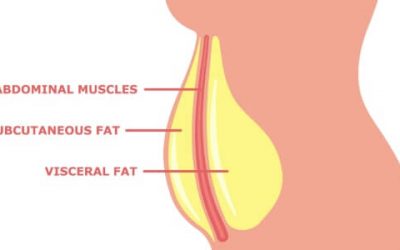The latest research is now telling us that 70-80% of people in the western world will experience lower back pain at some point in their lives. The chances are, if you are reading this, you’ve probably had it yourself. Maybe you have it now!

As a coach, it is the single most common physical complaint I hear from prospective trainees. When chatting to a potential new client , I will often hear a variation of “I was curious about getting into better shape and starting to exercise again, but I have suffered from chronic lower back pain for years and I am nervous about making it worse. What should I do?”
A lot of the time they may even have been advised by a trusted source (for example, a GP) to avoid certain types of exercise such as weight training for fear of exacerbating their problem. Or even told to avoid exercise altogether!
This is very often the worst thing that someone could do for ongoing, chronic back pain and hopefully I will be able to provide a few reasons why…
(Before we go any further, it’s important to make the distinction between chronic and acute back pain. Chronic pain is basically something ongoing, long-term, that may not have an obvious reason for it and the sufferer will often be unable to pinpoint exactly when it began. Acute pain is typically a result of an injury or a specific occurrence and is often easier to treat as a result. Obviously, this kind of problem is beyond the scope of this article and anyone who suffers an injury like this should seek treatment from a professional who specialises in these kinds of injuries)
The following are some reasons to exercise if you suffer from chronic low back pain. As you read through them, you will begin to see how they are all connected!
-
Movement makes it better.
There are a large number of scientific studies illustrating the link between a sedentary (inactive) lifestyle and ongoing lower back pain. Regular physical activity is a hugely important factor in how we can manage this problem, but the biggest problem is just getting started.
Quite understandably, people affected by this issue are reluctant to engage in anything they feel might make it worse. But speaking from personal experience, I have quite literally lost count of the number of people I have had come to me with long term low back pain, and a few months into their training I will casually ask them when the last time was that their back hurt…only to have them realise they could not remember!
-
It hurts because it’s weak.
This sounds a little simplistic, but simple things are often true. Strength training is widely accepted as an important element of a good exercise programme, but certain groups, such as , for example, females and elderly people have historically tended to avoid training with weights. The irony is that the groups that may well see the most benefit from strength training are often the ones who don’t tend to do it! And this is certainly true in the case of sufferers of low back pain.
Understandable ignorance plays a huge part in this. How many times have we been told not to pick up something heavy for fear of hurting our back? But the reality is that a properly designed strength training programme will often help us to prevent or manage chronic back pain. If a group of muscles as large and important as the lower back is allowed to become weak, it means there is a greater overall risk of developing chronic pain or becoming injured.
-
Lack of flexibility, mobility and stability.
And yes, they are three different things! Our typical modern sedentary lifestyles contribute to a general lack of mobility, range of motion and ability to maintain correct body position. These are all factors in chronic back pain. There are countless examples we could use for this, but an easy one would be that if someone had overly tight, shortened hipflexors (the muscle that crosses each hip in a vertical line at the centre of the thigh), this would pull them into a forward tilt position, putting a lot of stress on the lower back.
-
Bad posture.
Posture is our ability to maintain an optimal body position.
Very common examples of bad posture are kyphosis (rounded, hunched shoulders), excessive curvature of the lumbar spine (low back), tight hipflexors, tight ankles, and cervical protraction (forward head posture, also known as “texter’s neck”!). If our posture is poor, there are numerous ways it can add strain to the lower back and bad posture may be one of the most common factors in ongoing, difficult-to-treat pain in that region.
If someone has good posture it is usally as a result of a number of different factors. They will usually have decent levels of overall body composition, flexibility, strength, stability, and mobility. In other words, all the things you should be getting from a proper exercise programme!!

Hopefully this may be some help to those who have been suffering from ongoing low back pain. We would always recommend you talk to a qualified exercise specialist about your specific situation. Good luck and happy training!



